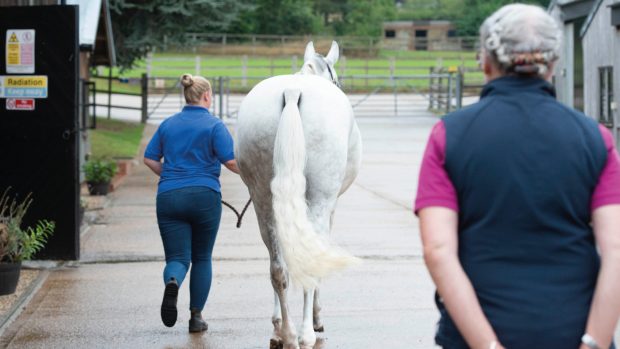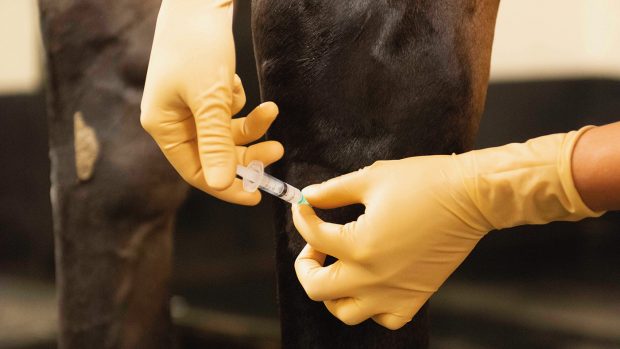Magnetic resonance imaging (MRI) is giving a whole new view of lameness problems. It could be the most important diagnostic technique of the 21st century because experts are starting to find out the truth behind conditions such as navicular syndrome.
The first MRI machine for live horses in the UK was installed at the Animal Health Trust (AHT), Newmarket three years ago. Since then, Dr Sue Dyson has scanned more than 200 horses.
“MRI has revolutionised our knowledge of foot pain, and we’re learning all the time,” says Dr Dyson. “Learning to interpret the images is a completely new skill. In each investigation there will be more than 1,000 images to examine.”
Dr Dyson explains that the reason MRI is such a valuable tool is that it enables vets to look for changes in soft tissue structures such as tendons and ligaments. It can also be used to assess areas not accessible to ultrasound imaging, in particular the foot and soft tissues inside the head, including the brain.
“We can look at changes in bone that are not evident in X-rays,” she says. “It enables us to look at all the structures and gives us dynamic information about what is going on.
“Because the images are of very thin slices, damage can be identified that would be hidden on X-rays by normal bone on either side. X-rays give a historical record of what went on in the past: MRI tells you what is happening in the bone now.”
Thanks to MRI, vets are finally getting a clearer view of navicular problems, although there is still more to learn.
“We don’t know yet what causes navicular disease. We now think there are several pathological processes taking part in the bone, so it is probably not correct to say that it is a single disease,” says Dr Dyson.
“It is astonishing what we have learned. I always believed we would find a number of soft tissue injuries in the foot, but 70% of horses believed to have navicular problems actually have soft tissue injuries, so navicular syndrome is much rarer than we thought.”
Lameness is by far the biggest reason for MRI scanning to be carried out, although there are other applications, including neurological problems, where machines such as the one at the AHT come into their own. Head scans can also be useful for teeth and sinus problems and have identified pituitary tumours in some cases.
So far, insurance companies have been willing to pay the costs of MRI scanning and have accepted the findings. However, owners must check policies carefully: you will certainly need written permission for a horse to be given a general anaesthetic for diagnostic purposes and some companies will increase the premium because of the risks involved.
It’s exciting time for vets, researchers and horse owners, because MRI work here and in the United States is creating the clearest picture yet of lameness, including previously unknown conditions.
Dr Dyson acknowledges that, as yet, treatment can’t keep pace with diagnosis, but that should change in time.
“Our diagnosis rate is very, very high but our treatment success doesn’t match that, probably because we’re dealing with some severe injuries that were not diagnosed early enough,” she says.
“I would like to think that in 10 years time we’ll have a better understanding of the causes of conditions we’re now diagnosing and a better awareness of how to treat them successfully.”
MRI facts
- MRI scanning can be used to assess soft tissues such as tendons and ligaments, as well as bone changes
- MRI is complimentary to other diagnostic procedures, such as X-ray, ultrasound and scintigraphy
- Session costs range from around £650-£1,200 depending on the type of machine, the procedures involved and whether or not the horse needs to be anaesthetised.
- There are two types of MRI machine currently in use in the UK and each has its pros and cons.
- The systems are in use at the Animal Health Trust, Newmarket, Bell Equine Veterinary Clinic and Liphook Equine Hospital. Cambridge University Veterinary School plans to have a system installed later this year
|
||
 |
||


 Get up to 19 issues FREE
Get up to 19 issues FREE TO SUBSCRIBE
TO SUBSCRIBE 



